Input interpretation

Er-162 (erbium-162) | Au-180 (gold-180)
Natural abundance

Er-162 | Au-180 0.139% | 0%
Decay properties
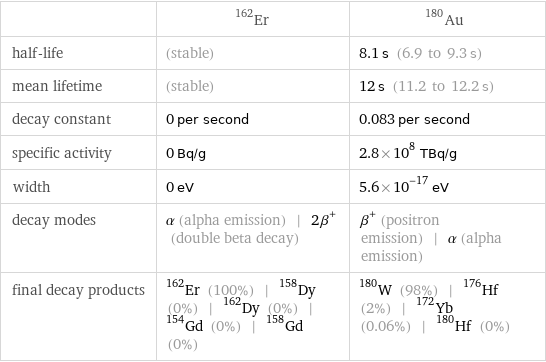
| Er-162 | Au-180 half-life | (stable) | 8.1 s (6.9 to 9.3 s) mean lifetime | (stable) | 12 s (11.2 to 12.2 s) decay constant | 0 per second | 0.083 per second specific activity | 0 Bq/g | 2.8×10^8 TBq/g width | 0 eV | 5.6×10^-17 eV decay modes | α (alpha emission) | 2β^+ (double beta decay) | β^+ (positron emission) | α (alpha emission) final decay products | Er-162 (100%) | Dy-158 (0%) | Dy-162 (0%) | Gd-154 (0%) | Gd-158 (0%) | W-180 (98%) | Hf-176 (2%) | Yb-172 (0.06%) | Hf-180 (0%)
Decay modes
Er-162

decay mode | α (alpha emission) Q-value | 1.64457 MeV (megaelectronvolts) daughter nuclide | Dy-158 decay mode | 2β^+ (double beta decay) Q-value | -200.21 keV (kiloelectronvolts) daughter nuclide | Dy-162
Au-180
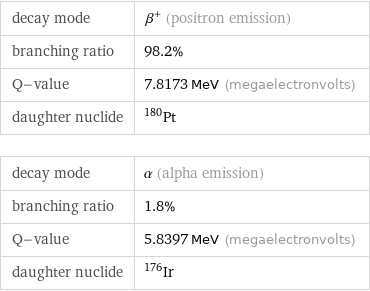
decay mode | β^+ (positron emission) branching ratio | 98.2% Q-value | 7.8173 MeV (megaelectronvolts) daughter nuclide | Pt-180 decay mode | α (alpha emission) branching ratio | 1.8% Q-value | 5.8397 MeV (megaelectronvolts) daughter nuclide | Ir-176
Radiation shielding

Radiation shielding
Decay chain
Er-162

Decay chain Er-162
Au-180
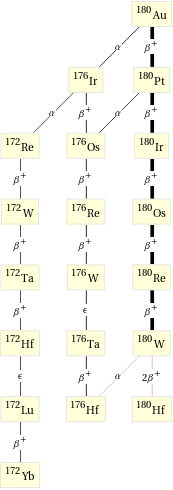
Decay chain Au-180
Mass properties
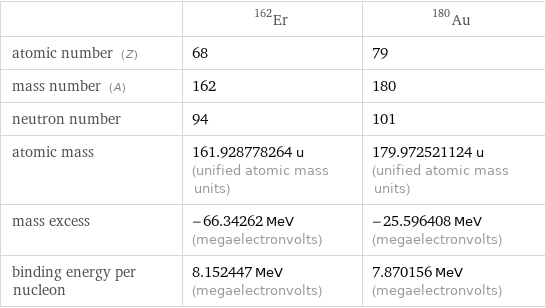
| Er-162 | Au-180 atomic number (Z) | 68 | 79 mass number (A) | 162 | 180 neutron number | 94 | 101 atomic mass | 161.928778264 u (unified atomic mass units) | 179.972521124 u (unified atomic mass units) mass excess | -66.34262 MeV (megaelectronvolts) | -25.596408 MeV (megaelectronvolts) binding energy per nucleon | 8.152447 MeV (megaelectronvolts) | 7.870156 MeV (megaelectronvolts)

Mass properties
Nearby isotopes
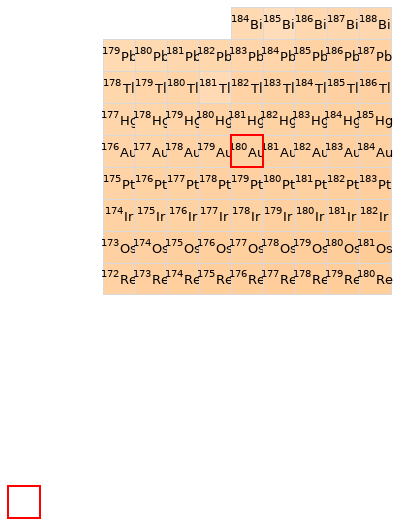
Nearby isotopes
Quantum properties
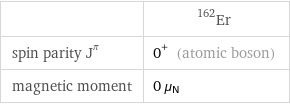
| Er-162 spin parity J^π | 0^+ (atomic boson) magnetic moment | 0 μ_N

Quantum properties